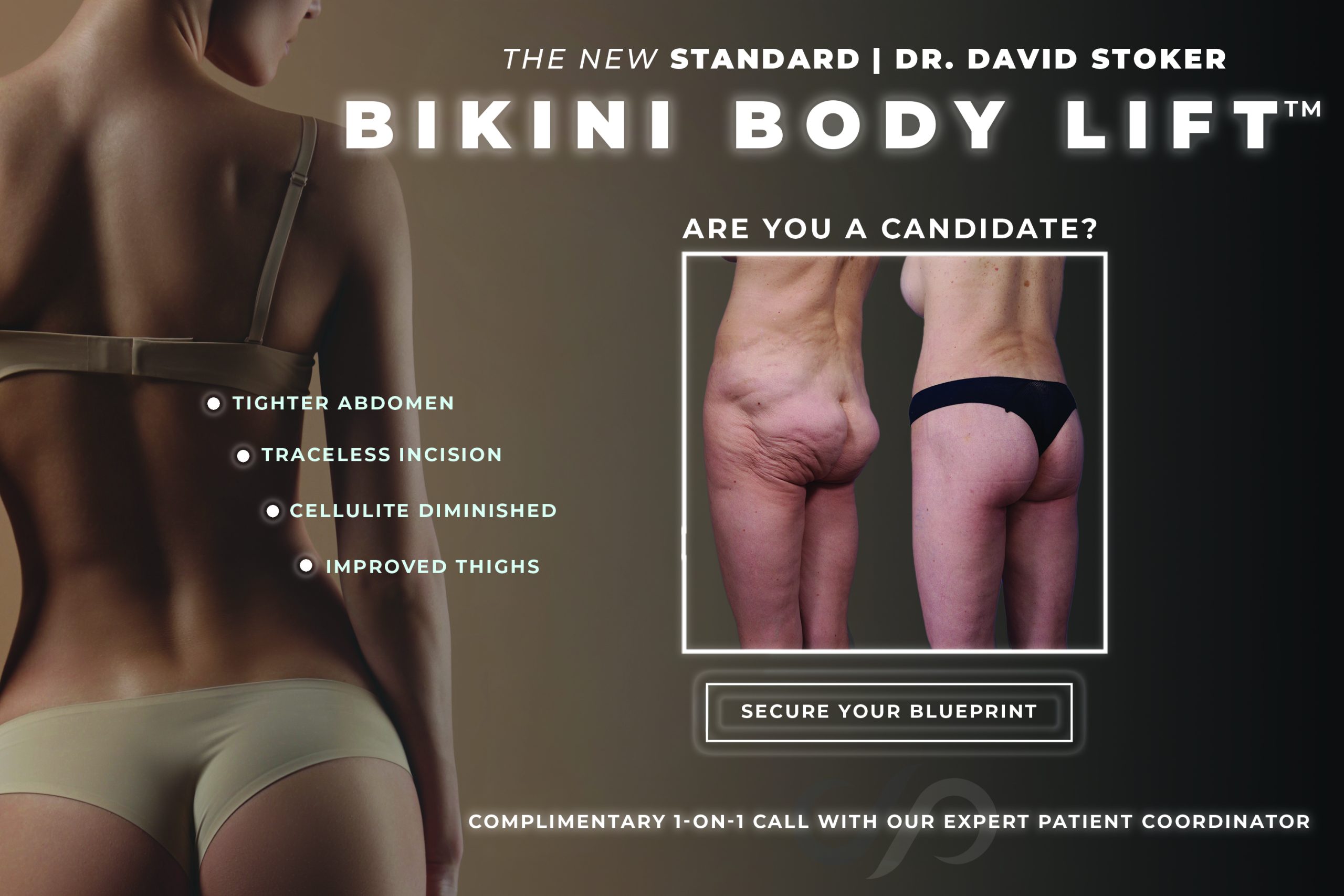
You’ve finally reached your goal weight, but you still have excess skin, fat, and stretch marks on your abdomen, torso, and buttocks areas. Now what? I see a lot of post-weight loss patients who come to me for body lift surgery in the Los Angeles area. I offer different options for this procedure, and treatment is always customized to the individual.
If you’re researching body lift after massive weight loss, here are some answers to common questions to help you determine if this might be the right solution for you.
What does body lift surgery entail?
A body lift is designed to remove the excess skin left after major weight loss and to improve the contours of the body. I offer two different types of body lift at my practice.
- Lower body lift: This is the most commonly performed type of body lift. It usually includes a tummy tuck (abdominoplasty), thigh lift, and buttocks lift performed in one operation. The incision is placed around the waistline and is hidden by underwear or swimsuit bottoms.
- Upper body lift: This is the appropriate treatment for patients with severe skin laxity of the upper torso. This usually includes a bra line back lift and upper abdominoplasty, but the procedure is tailored to the individual’s needs.
You can read more about the body lift process in my earlier blog post.
What are some common body lift misconceptions?
Many people assume that a body lift will make you look the way you did before your weight gain. Unfortunately, patients must be realistic about their surgeries. Though a body lift can create dramatic improvement, it has limitations. Looking at before-and-after photos of real patients can help you have realistic expectations.
People who have hit their goal weight are often eager to undergo body lift surgery. However, in order to achieve the best possible results, you should make sure that you are at a healthy weight that you can maintain. Future weight fluctuations can affect your results, so most surgeons will not perform surgery unless a patient has maintained their weight loss for 6 months to a year.
Plastic surgery, especially after weight loss, is an exciting and rewarding process. However, patients must keep in mind that most good things take time. Though you will be able to see results immediately, it may take several months to a year to achieve your final outcome.
How do body lifts differ from other body contouring procedures?
Body lifts are specifically designed for the patient who has lost a significant amount of weight and is left with sagging, bulky skin. Procedures like liposuction or Brazilian butt lift are performed to enhance contours in patients with good skin elasticity.
Who is the ideal body lift candidate?
A good candidate is a healthy non-smoker with no medical conditions that impede healing. Post weight loss patients need to be cautious about vitamin or mineral deficiencies. He or she should have a positive outlook and realistic goals for their procedure. After significant weight loss, they should demonstrate a commitment to leading a healthy lifestyle. The patient should also have kept the weight off for at least 6 to 12 months.
What should I expect after body contouring surgery?
Recovery times vary from patient to patient. You should plan to take at least 1 week away from work. Many patients have fatigue for around 4 to 6 weeks. Full activity can usually resume 6 weeks post-op.
After surgery, bandages are applied to the incisions and small tubes may be temporarily placed at the surgical sites to drain any excess fluid. Don’t hesitate to call your surgeon’s office if you have any questions. At my office, we encourage good communication between doctor and patient to ensure optimal results.
If you think you may be a good candidate for a body lift, request a consultation online or call our office at (310) 300-1779. We can discuss your options individually and figure out what is best for you.


Leave a Reply